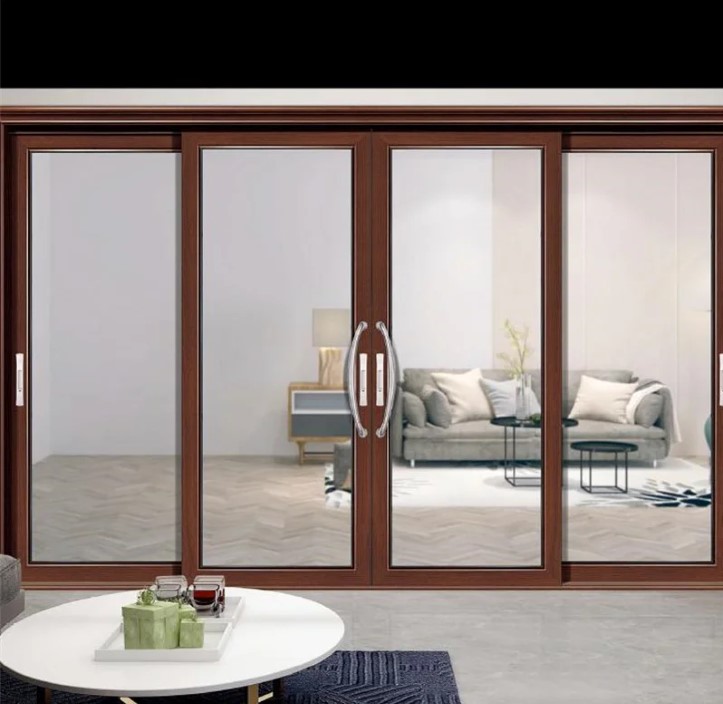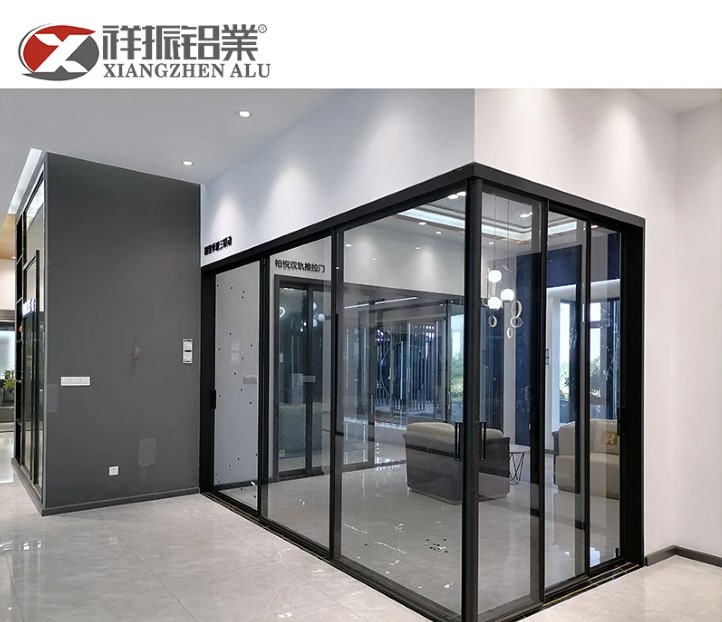
Aluminium sliding doors are a staple in modern architecture, valued for their sleek aesthetic and the seamless flow they create between indoor and outdoor spaces. They bathe interiors in natural light and facilitate air circulation, enhancing both the functionality and ambiance of a home. Nevertheless, the smooth operation of these doors can deteriorate over time, leading to sticking and resistance that can be frustrating for homeowners. In this comprehensive guide, we'll explore multiple strategies to restore the effortless glide of your aluminium sliding doors, ensuring they continue to operate with ease and efficiency. Whether it's routine maintenance or more in-depth repairs, our tips will help you keep your doors sliding smoothly for years to come.
A common culprit behind a sticky aluminium sliding door is the accumulation of debris in the tracks and on the rollers. Regular cleaning can prevent build-up and ensure the door slides with minimal effort. Here's a step-by-step guide to maintaining the tracks and rollers:
1. Carefully lift and angle the sliding door out of its tracks to remove it.
2. Thoroughly scrub the tracks using a stiff-bristled brush, then vacuum up the loosened dirt to clear away any remaining particles.
3. Wipe the rollers with a damp cloth to remove built-up grime, ensuring they can roll without hindrance.
4. Apply a silicone-based lubricant to the rollers to facilitate a smooth glide without attracting more dirt, as oil-based products can.
If the door still does not slide smoothly after cleaning the tracks and rollers, it may be necessary to replace the worn-out rollers. Rollers can wear out over time due to regular use and exposure to the elements. To replace the rollers, follow these steps:
a. If the door still doesn't slide smoothly after cleaning the tracks and rollers, it may be necessary to replace the worn-out rollers.
b. Start by removing the sliding door from the tracks, following the same process as described earlier.
c. Locate the rollers at the bottom of the door. They are usually attached to brackets or housing units.
d. Identify the screws or fasteners that hold the rollers in place. Remove these screws using the appropriate tools (e.g., screwdriver) and detach the old rollers from the door.
e. Take the new rollers and align them with the corresponding holes or brackets on the door. Make sure they fit securely.
f. Once aligned, insert the screws through the holes in the new rollers and tighten them to secure the rollers in place.
g. After replacing the rollers, carefully place the sliding door back into the tracks, ensuring that the rollers fit properly into the track grooves.
h. Finally, test the operation of the sliding door by sliding it back and forth to ensure smooth movement.

Another reason why an aluminium sliding door may not slide smoothly is that the tracks may be misaligned. Over time, the tracks can shift due to settling or improper installation. To adjust the track alignment, follow these steps:
a. Start by removing the sliding door from the tracks as described earlier.
b. Use a level to check the alignment of the tracks. Place the level on top of the track and ensure it is perfectly horizontal.
c. If the tracks are misaligned, locate the screws that hold the track in place. Loosen these screws but do not remove them completely.
d. To realign the track, use a rubber mallet and gently tap the track in the necessary direction. Tap it towards the center if it's misaligned outward or vice versa.
e. Once the track is back in alignment, tighten the screws to secure it in place.
f. Finally, reinstall the sliding door into the tracks and test its smooth sliding operation.
A door sweep is a basic but efficient technique for enhancing the functioning of a sliding door. A door sweep is a rubber or silicone strip that is put at the bottom of a sliding door. It contributes to the formation of a tight seal between the door and the track, preventing dirt, debris, and insects from entering the residence. A door sweep can also aid in noise reduction and energy efficiency. To install a door sweep, follow these steps:
a. Remove the sliding door from the tracks by lifting it up and swinging the bottom away from the track.
b. Measure the width of the bottom of the door to determine the length of the door sweep needed.
c. Cut the door sweep to the appropriate length using a saw or utility knife.
d. Slide the door sweep onto the bottom edge of the door, ensuring that it forms a tight seal with the track when the door is closed.
e. Once the door sweep is properly positioned, reinstall the sliding door into the tracks.
f. Test the operation of the door and check if the door sweeps effectively seals the bottom, keeping out dirt, debris, and insects.
Installing a track cover is another approach to improve the performance of an aluminum sliding door. A track cover is a cover made of plastic or metal that fits over the top of the track. It aids in keeping the track clean and clear of dirt, which prevents the door from becoming stuck. To install a track cover, follow these steps:
a. Remove the sliding door from the tracks as explained earlier.
b. Measure the width of the track to determine the length of the track cover required.
c. Cut the track cover to the appropriate length using a saw or utility knife.
d. Slide the track cover onto the top of the track, ensuring it fits securely.
e. Depending on the type of track cover, secure it in place with screws or adhesive, following the manufacturer's instructions.
f. Once the track cover is properly installed, reinsert the sliding door into the tracks.
g. Test the operation of the door and observe how the track cover helps keep the track clean and prevents the door from getting stuck.

A sliding door may be difficult to slide if the door panels are deformed. This can happen as a result of temperature or humidity fluctuations or as a result of impact damage. To check for warped door panels, follow these steps:
a. Begin by fully opening the sliding door and visually inspecting the panels for any signs of warping or damage. Warping can be caused by temperature changes or humidity fluctuations over time, or it may result from impact damage.
b. Look closely at the panels, both horizontally and vertically, to identify any visible signs of warping. This may include panels that appear bowed, twisted, or uneven.
c. To ensure accurate assessment, use a level to check the alignment of the door panels. Place the level vertically and horizontally against the panels to determine if they are straight and level.
d. If you notice significant warping or damage to the door panels, it is recommended to contact a professional for further evaluation and repair or replacement of the door.
There are several ways to make an aluminium sliding door slide easier. If you looking for a new aluminium sliding door in the market, look no further than XIANGZHEN! Contact us and get a quotation!